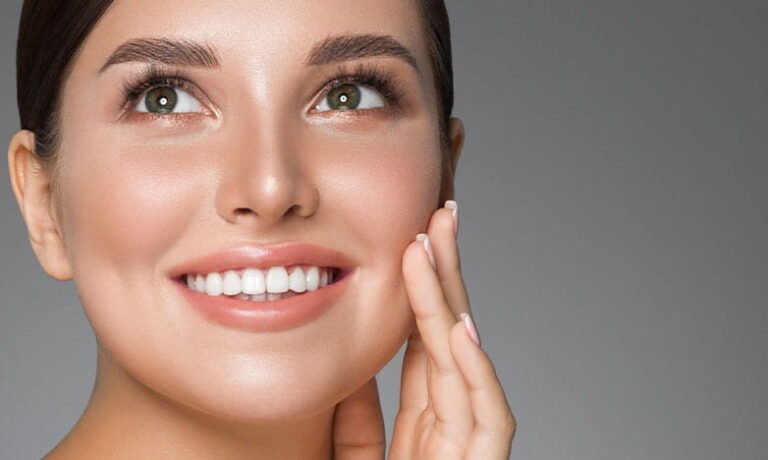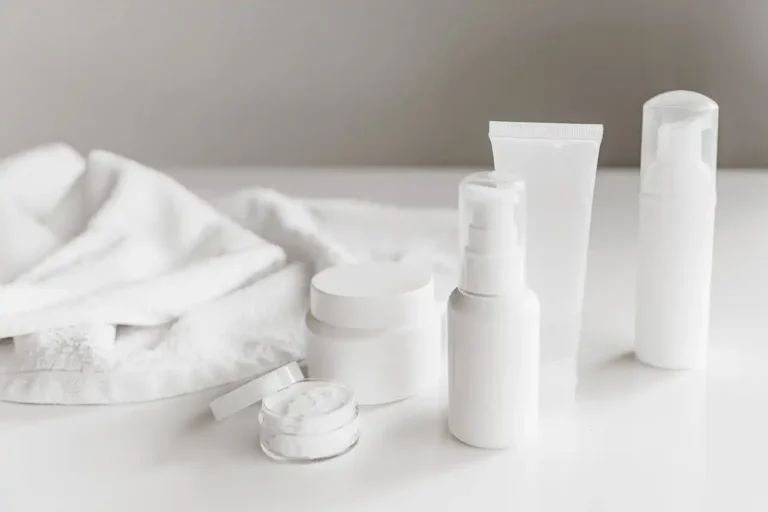Skincare Routine For Oily Skin And Acne Scars
Use gentle cleansers and non-comedogenic moisturizers daily. Exfoliate regularly and apply products with salicylic acid or benzoyl peroxide.
Scarred skin requires a unique skincare routine to manage excess oil and minimize scars. Gentle cleansers help remove dirt without stripping natural oils.

Non-comedogenic moisturizers keep the skin hydrated without clogging pores. Regular exfoliation removes dead skin cells and promotes skin regeneration.
Products containing salicylic acid or benzoyl peroxide reduce oil production and clear acne, preventing further scarring.
Consistency and the right products are key to effectively managing oily, scarred skin. For overall skin health, maintain a balanced diet and stay hydrated.
Understanding Oily, Scarred Skin
Oily, scarred skin can be challenging. Understanding the root causes of these issues is the first step toward effective skincare. Oily skin produces a shiny appearance and frequent breakouts; scars add texture and discoloration.

By knowing what causes these problems, you can better manage them and achieve healthier skin.
Factors Contributing To Oily Skin
Oily skin occurs when the sebaceous glands produce too much sebum. This can result in clogged pores and acne. Several factors contribute to excessive oil production:
- Genetics: If your parents have oily skin, you will also have it.
- Hormonal Changes: Puberty, pregnancy, or menstruation can trigger oil production.
- Diet: Consuming lots of dairy or sugary foods can increase sebum production.
- Environment: Humid and hot weather can make your skin oilier.
- Incorrect Skincare: Using harsh products strips the skin of its natural oils, causing it to produce more oil.
| Factor | Effect on Oil Production |
|---|---|
| Genetics | High |
| Hormonal Changes | Moderate |
| Diet | Moderate |
| Environment | High |
| Incorrect Skincare | High |
Causes Of Skin Scarring
Skin scarring often results from acne or injuries. These scars can be difficult to treat and may affect your self-esteem. Understanding the causes of scarring helps in preventing and managing them effectively:
- Acne: Severe acne, especially cystic acne, can leave deep scars.
- Injuries: Cuts, burns, or surgery can result in scars if not treated properly.
- Improper Wound Care: Picking or squeezing pimples and not keeping wounds clean can worsen scarring.
- Skin Infections: Infections like chickenpox can leave scars if scratched.
- Genetics: Some people are more prone to scarring due to their genetic makeup.
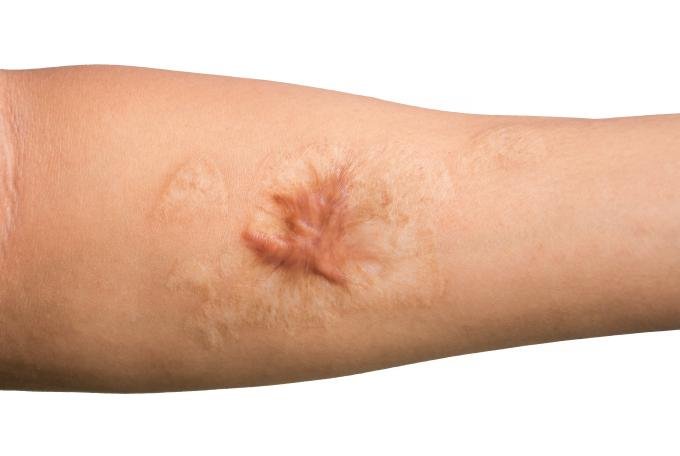
| Cause | Likelihood of Scarring |
|---|---|
| Acne | High |
| Injuries | Moderate |
| Improper Wound Care | High |
| Skin Infections | Moderate |
| Genetics | Varies |
Cleansing And Exfoliation
Oily, scarred skin requires special care to maintain a healthy and clear complexion. Cleansing and exfoliation are crucial steps in any skincare routine.
These steps help remove excess oil, dirt, and dead skin cells that can clog pores and lead to breakouts. Using the right techniques and products can make a significant difference in managing oily, scarred skin.
Gentle Cleansing Techniques
For oily, scarred skin, gentle cleansing is vital. Harsh products can strip the skin of natural oils, causing more oil production and worsening scars. Follow these tips for effective cleansing:
- Use a mild, non-comedogenic cleanser: Choose a cleanser designed for oily skin that won’t clog pores.
- Wash your face twice daily: Cleanse in the morning and before bed to remove excess oil and impurities.
- Avoid hot water: Use lukewarm water to prevent irritation and over-drying.
- Pat dry with a soft towel: Avoid rubbing your face, as it can irritate the skin.
Consider incorporating a double cleansing method if you wear makeup or sunscreen:
- First, use an oil-based cleanser to dissolve makeup and sunscreen.
- Then, follow with a water-based cleanser to remove any remaining impurities.
Double cleansing ensures your skin is thoroughly clean without being stripped of essential moisture.
Exfoliation Methods For Oily, Scarred Skin
Exfoliation helps remove dead skin cells, promoting cell turnover and reducing the appearance of scars. For oily, scarred skin, choose gentle exfoliation methods:
- Chemical exfoliants: Use products containing alpha hydroxy acids (AHAs) or beta hydroxy acids (BHAs). These acids dissolve dead skin cells without physical abrasion.
- Enzyme exfoliants: Products with fruit enzymes can gently exfoliate and brighten the skin.
- Exfoliate 2-3 times a week: Over-exfoliating can irritate the skin and worsen scarring.
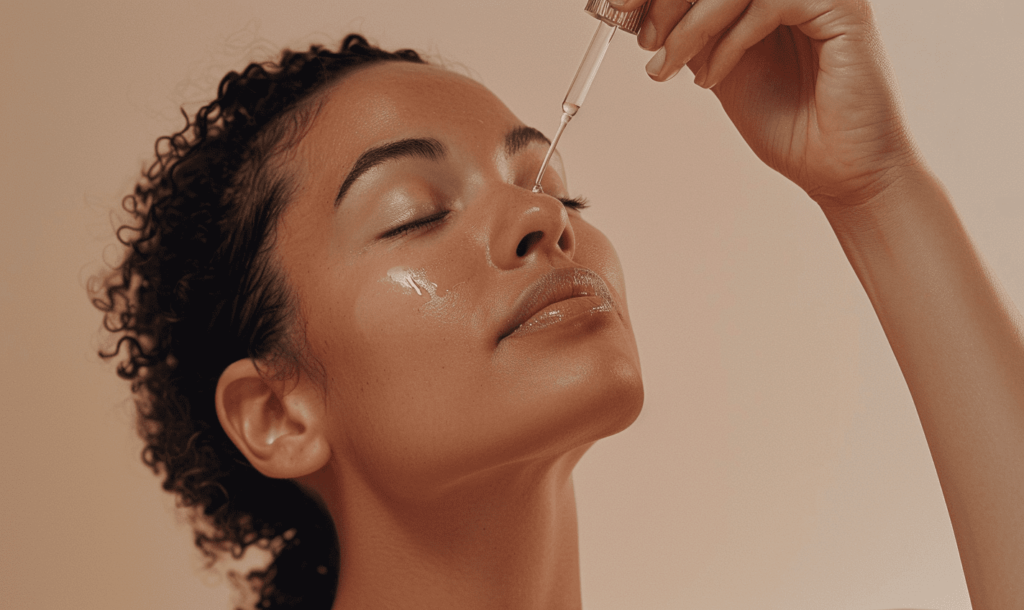
Avoid using harsh scrubs that contain large, rough particles. These can cause micro-tears in the skin and exacerbate scarring. Here’s a quick comparison of exfoliation methods:
| Exfoliation Method | Benefits |
|---|---|
| Chemical Exfoliants (AHAs/BHAs) | Effective, penetrates deep, reduces scars |
| Enzyme Exfoliants | Gentle, suitable for sensitive skin |
Always follow exfoliation with a moisturizer to keep your skin hydrated and balanced. Choose an oil-free, non-comedogenic moisturizer to avoid clogging pores.
Choosing The Right Products
Oily, scarred skin can be challenging, but choosing the right products can make a big difference. Products that suit your skin type can reduce oiliness, prevent breakouts, and help fade scars. Below, we explore top skincare tips for selecting the best products for oily, scarred skin.
Non-comedogenic Moisturizers
Moisturizing oily skin might seem counterintuitive, but it is essential. Non-comedogenic moisturizers are formulated to avoid clogging pores, helping prevent breakouts and keeping skin hydrated without adding extra oil.
Look for the following ingredients:
- Hyaluronic Acid – Hydrates skin without making it oily.
- Glycerin – Draws moisture into the skin, keeping it soft.
- Niacinamide – Reduces inflammation and helps with acne scars.
Here is a table of some popular non-comedogenic moisturizers:
| Product | Key Ingredient | Benefits |
|---|---|---|
| Cetaphil Oil Control Moisturizer | Zinc | Controls oil and provides sun protection |
| Neutrogena Hydro Boost | Hyaluronic Acid | Intense hydration without oiliness |
| La Roche-Posay Effaclar Mat | Sebulyse | Reduces shine and tightens pores |
Applying a non-comedogenic moisturizer daily can balance your skin’s oil production and help reduce the appearance of scars.
Oil-free Sunscreens
Protecting your skin from the sun is crucial, especially for oily, scarred skin. Oil-free sunscreens shield your skin from harmful UV rays without clogging pores. Here’s what to look for in an oil-free sunscreen:
- Broad-spectrum protection – Shields against both UVA and UVB rays.
- SPF 30 or higher – Ensures adequate protection.
- Matte finish – Keeps your skin looking fresh and non-greasy.
Popular oil-free sunscreens include:
| Product | SPF | Benefits |
|---|---|---|
| EltaMD UV Clear | SPF 46 | Contains niacinamide for acne-prone skin |
| Neutrogena Clear Face | SPF 55 | Non-comedogenic and water-resistant |
| Cerave Ultra-Light Moisturizing Lotion | SPF 30 | Lightweight with a matte finish |
Daily oil-free sunscreen can prevent sun damage and reduce the risk of dark spots and scars worsening. Always apply it as the last step in your morning skincare routine.
Targeted Treatments
Dealing with oily, scarred skin can be challenging. The right skincare routine can make a significant difference. Targeted treatments specifically address scars and acne, offering smoother and clearer skin.
Serums For Scar Reduction
Serums can significantly reduce the appearance of scars. They often contain ingredients like vitamin C, retinol, and hyaluronic acid, promoting skin regeneration and collagen production.

Here are some top serums for scar reduction:
- Vitamin C Serums: Brighten the skin and reduce dark spots.
- Retinol Serums: Stimulate cell turnover and smoothen skin texture.
- Hyaluronic Acid Serums: Hydrate the skin, making scars less noticeable.
Let’s look at the benefits of these ingredients:
| Ingredient | Benefits |
|---|---|
| Vitamin C | Brightens skin, reduces dark spots |
| Retinol | Stimulates cell turnover, smooths texture |
| Hyaluronic Acid | Hydrates skin, reduces scar visibility |
Apply serums after cleansing and toning. Use them consistently for the best results. Always follow up with a moisturizer and sunscreen during the day.
Acne Spot Treatments
Acne spot treatments can help reduce inflammation and prevent future breakouts. They contain potent ingredients that target acne directly. Here are some effective options:
- Salicylic Acid: Unclogs pores and reduces swelling.
- Benzoyl Peroxide: Kills acne-causing bacteria and prevents new pimples.
- Sulfur: Absorbs excess oil and dries out blemishes.
These treatments work best when applied directly to the affected areas. Here are some tips:
- Cleanse your skin before applying the treatment.
- Use a small amount to avoid irritation.
- Follow with a non-comedogenic moisturizer.
Here’s a quick comparison of these ingredients:
| Ingredient | Action |
|---|---|
| Salicylic Acid | Unclogs pores, reduces swelling |
| Benzoyl Peroxide | Kills bacteria, prevents pimples |
| Sulfur | Absorbs oil, dries blemishes |
Combining these targeted treatments can provide clearer, smoother skin. Always patch-test new products to ensure they suit your skin type.
Diet And Lifestyle
Oily, scarred skin often feels like a battle, but the right diet and lifestyle can make a significant difference.
Your daily habits, stress levels, and food choices directly impact your skin’s health. Let’s explore how diet and lifestyle changes can improve oily, scarred skin.

Impact Of Diet On Skin Health
What you eat shows on your skin. An unhealthy diet can worsen oily, scarred skin. Foods high in sugar and fat can trigger acne and oil production.
To improve your skin, focus on these dietary changes:
- Reduce Sugar: Limit sweets, sodas, and sugary snacks. High sugar intake can spike insulin levels, leading to more oil production.
- Increase Fiber: Eat more fruits, vegetables, and whole grains. Fiber helps maintain gut health, which is linked to clear skin.
- Hydrate: Drink plenty of water. Staying hydrated helps flush out toxins and keeps skin plump.
- Omega-3 Fatty Acids: Include fish, flaxseeds, and walnuts in your diet. Omega-3s reduce inflammation and can help with acne.
Here’s a table of foods to include and avoid for better skin health:
| Foods to Include | Foods to Avoid |
|---|---|
| Leafy greens, berries, nuts | Fried foods, sugary snacks, high-fat dairy |
| Whole grains, fish, lean proteins | Processed meats, refined carbs, soda |
Stress Management For Oily, Scarred Skin
Stress can worsen oily, scarred skin. When stressed, the body produces more cortisol, increasing oil production and breakouts.
Effective stress management techniques include:
- Regular Exercise: Exercise reduces stress hormones and promotes better sleep. Aim for at least 30 minutes of physical activity daily.
- Meditation and Deep Breathing: Spend a few minutes daily meditating or practicing deep breathing. These techniques calm the mind and reduce stress.
- Proper Sleep: Aim for 7-8 hours of sleep per night. Good sleep helps your body repair and reduces stress levels.
- Hobbies and Relaxation: Engage in activities you enjoy. Whether it’s reading, painting, or gardening, hobbies can help you unwind.
Incorporating these practices into your daily routine can significantly reduce stress and improve the appearance of your skin.
Professional Interventions
Oily, scarred skin can be challenging to manage. Professional interventions performed by dermatologists and skin care experts offer effective solutions for achieving clear, smooth skin. They help reduce oiliness and scars, ensuring long-term benefits.
Dermatological Procedures
Dermatological procedures are highly effective for treating oily, scarred skin. These treatments are performed by certified dermatologists. Some popular procedures include:
- Microdermabrasion: This non-invasive procedure exfoliates the skin, removing dead cells and reducing oiliness.
- Laser Therapy: Laser treatments target scarred areas, promoting collagen production and skin regeneration.
- Microneedling: Tiny needles create micro-injuries in the skin, stimulating healing and reducing scar visibility.
Each procedure is tailored to individual skin needs. Dermatologists assess your skin type before recommending a treatment. Here is a brief overview:
| Procedure | Benefits | Recovery Time |
|---|---|---|
| Microdermabrasion | Exfoliates, reduces oiliness | 1-2 days |
| Laser Therapy | Targets scars, boosts collagen | 1 week |
| Microneedling | Reduces scars, promotes healing | 3-5 days |
Chemical Peels For Scar Reduction
Chemical peels are an effective method for reducing scars and controlling oil production. These peels use chemical solutions to exfoliate the skin. The process removes the outer layer, revealing fresh, new skin underneath.
There are different types of chemical peels:
- Light Peels: Use mild acids, such as alpha-hydroxy acids (AHAs). They treat minor scars and oily skin.
- Medium Peels: Use trichloroacetic acid (TCA). They penetrate deeper, treating moderate scars and oiliness.
- Deep Peels: Use phenol. They address severe scarring and offer significant results.
Choosing the right peel depends on your skin type and scar severity. Here is a table summarizing the types:
| Peel Type | Best For | Recovery Time |
|---|---|---|
| Light Peel | Minor scars, oily skin | 1-2 days |
| Medium Peel | Moderate scars, oiliness | 1 week |
| Deep Peel | Severe scars | 2-3 weeks |
Consult with a dermatologist to determine the best peel for your skin. Regular treatments help maintain results and improve skin texture over time.
Makeup Tips
Finding the right makeup tips for oily, scarred skin can be challenging. The right makeup can enhance your natural beauty while minimizing the appearance of scars. Read on to discover some of the best makeup tips for achieving a flawless look.
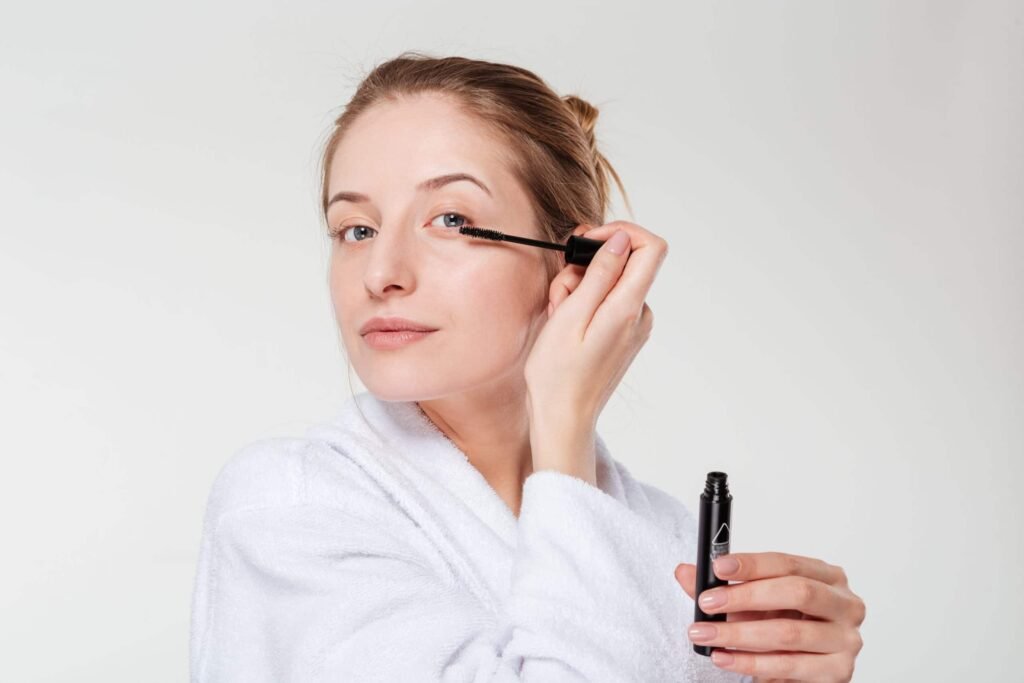
Choosing Makeup For Oily Skin
When selecting makeup for oily skin, it is important to choose products that help control shine and reduce oil production. Look for makeup labeled “oil-free” or “matte finish.” These products are specifically designed for oily skin and can help balance your complexion.
Here are some key tips to keep in mind:
- Primer: Use a mattifying primer to create a smooth base.
- Foundation: Opt for a long-wearing, oil-free foundation.
- Powder: Set your makeup with a translucent powder to control shine.
- Blotting Papers: Keep blotting papers handy to absorb excess oil throughout the day.
Here is a table of some recommended products:
| Product | Type | Benefits |
|---|---|---|
| Benefit POREfessional | Primer | Minimizes pores and controls shine |
| Estée Lauder Double Wear | Foundation | Long-lasting, oil-free |
| Laura Mercier Translucent Powder | Powder | Sets makeup, controls oil |
Concealing Scars Effectively
Concealing scars can enhance your confidence. The right techniques and products can make a significant difference. Start with a color-correcting concealer. Green concealer neutralizes redness, while peach or orange concealer hides dark spots.
Follow these steps for effective scar concealment:
- Apply Primer: Use a primer to create a smooth canvas.
- Color Correct: Apply a color-correcting concealer on the scars.
- Foundation: Use a full-coverage foundation to even out skin tone.
- Concealer: Dab a high-coverage concealer directly on the scars.
- Blend: Blend well with a damp makeup sponge.
- Set: Set the makeup with a translucent powder.
Pro-tip: Use a setting spray to lock your makeup in place for all-day wear.
By following these steps, you can achieve a flawless look while minimizing the appearance of scars.
Maintaining Consistency
Dealing with oily, scarred skin requires dedication and patience. Consistency is key to seeing improvements and maintaining healthy skin.
Here, we will share top skincare tips that focus on consistency. Following a routine and adapting to seasonal changes are crucial for achieving clear, smooth skin.
Establishing A Skincare Routine
A consistent skincare routine is essential for managing oily, scarred skin. Start by cleansing your face twice daily. Use a gentle, oil-free cleanser in the morning and evening. This removes excess oil and prevents clogged pores.
Include toning in your routine. Choose an alcohol-free toner to balance your skin’s pH levels. Toning helps to tighten pores and remove any remaining impurities.

Moisturizing is critical even for oily skin. Opt for a lightweight, non-comedogenic moisturizer. This keeps the skin hydrated without adding extra oil.
Sunscreen should be non-negotiable. Apply a broad-spectrum SPF 30 or higher every morning. Sunscreen protects your skin from UV damage and prevents scars from darkening.
To simplify, here’s a table outlining a basic skincare routine:
| Step | Product Type | Frequency |
|---|---|---|
| Cleansing | Oil-free cleanser | Twice Daily |
| Toning | Alcohol-free toner | Twice Daily |
| Moisturizing | Non-comedogenic moisturizer | Twice Daily |
| Sun Protection | SPF 30 or higher | Every Morning |
Exfoliating is also important but should be done sparingly. Use a gentle exfoliant once or twice weekly to remove dead skin cells and promote cell turnover.
Consistency in following this routine will lead to noticeable improvements in your skin’s texture and clarity.
Adapting To Seasonal Changes
Seasonal changes can affect your skin’s behavior. Adjusting your routine accordingly helps maintain balance. During the summer, increased humidity can make skin oilier. Opt for a gel-based moisturizer to keep skin hydrated without excess oil.
In contrast, winter months bring dryness. Switch to a more hydrating moisturizer to combat flaky skin. Also, consider using a humidifier indoors to maintain moisture levels in the air.
SPF remains crucial year-round. Even in winter, UV rays can penetrate and damage skin. Always apply sunscreen before stepping outside.
Here are some tips for seasonal adjustments:
- Summer: Use lightweight products, increase cleansing frequency, and keep blotting papers handy.
- Winter: Use richer moisturizers, reduce exfoliation frequency, and add a hydrating serum.
Adapting your routine consistently to the seasons ensures that your skin stays healthy and balanced. Monitor your skin’s needs and make adjustments as necessary.
Frequently Asked Questions
What Skincare Is Good For Oily Blackhead Prone Skin?
Use a gentle cleanser twice daily. Apply salicylic acid to unclog pores. Moisturize with oil-free, non-comedogenic products. Use clay masks weekly.
What Products Help With Acne Scarring?
Products like retinoids, vitamin C serums, and chemical peels help with acne scarring. Hyaluronic acid and microneedling treatments also improve skin texture.
What Skincare Is Best For Oily Skin?
Use lightweight, non-comedogenic moisturizers. Opt for oil-free cleansers with salicylic acid. Include a mattifying toner. Use clay masks weekly.
How Do You Treat Severe Oily Skin?
Treat severe oily skin by using oil-free cleansers, applying salicylic acid-based products, moisturizing with non-comedogenic lotions, using clay masks weekly, and consulting a dermatologist.
Conclusion
With the right care, healthy skin without oiliness or scars is possible. Follow these tips consistently for the best results. Remember, patience and persistence are key. Consult a dermatologist for personalized advice. Your skin deserves the best treatment. Start today for a clearer, healthier complexion.


